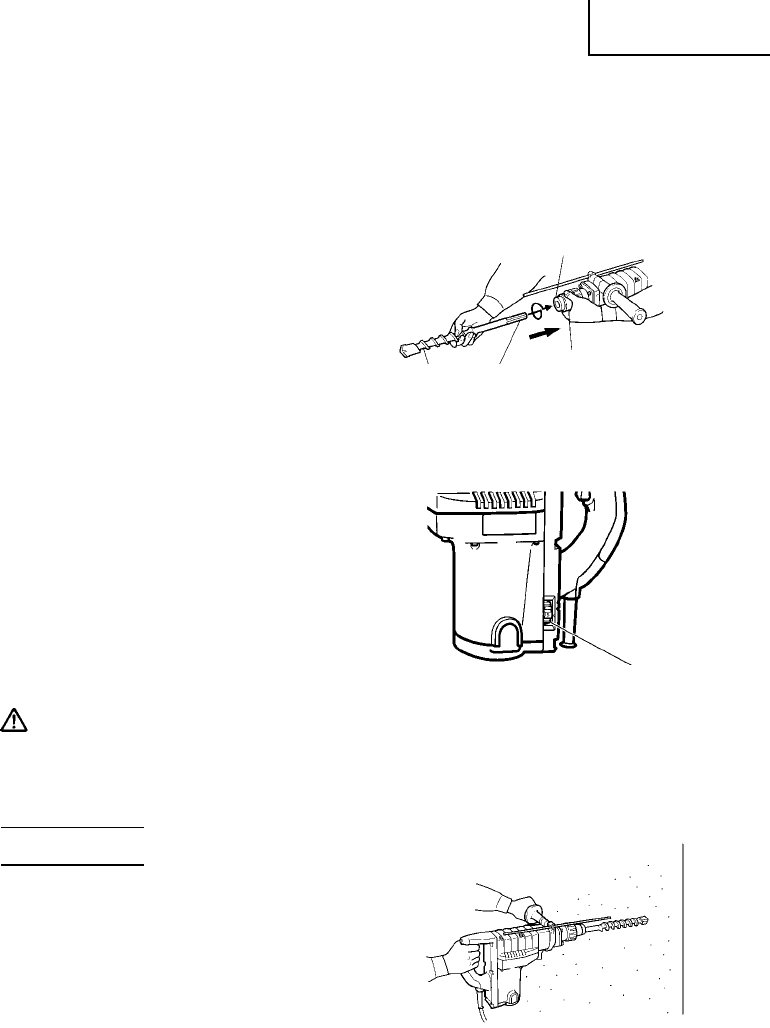
11
English
(2) To attach the tool (SDS max shank), insert it into the hole until it contacts the
innermost end of the hole as illustrated in Fig. 2.
If you continue to turn the tool with slight pressure, you can feel a spot where
there is a hitch. At that spot, pull the grip to the direction of an arrow mark and
insert the tool all the way until it hits the innermost end.
Releasing the grip reverts the grip and secures the tool in place.
(3) To remove the tool, fully pull the grip in
the direction of the arrow and pull out
the tool.
7. Regulating the number of rotations
and hammering (Fig. 3)
This hammer drill is equipped with a
built-in electronic control circuit that can
adjust and regulate the number of
rotations and times of hammering. This
hammer drill can be used by adjusting
the dial, depending upon the contents
of operation, such as boring holes into
fragile materials, chipping, centering,
etc.
The scale ‘1’ of the dial is designed for
a minimum speed with the number of
180 rotations per minute and 1,400
times of blow per minute. The scale ‘5’
is designed for a maximum speed with
the number of 360 rotations per minute
and 2,800 times of blow per minute.
CAUTION:
Do not adjust the dial during operation. Doing so can result in injury because
the rotary hammer must be held by only one hand, disabling the steady control
of the rotary hammer.
HOW TO USE
1. How to drill holes (Fig. 4)
(1) Pull the switch trigger after applying the
drill bit tip to the drilling position.
(2) It is unnecessary to forcibly press the
rotary hammer main body. It is sufficient
to slightly press the rotary hammer to
an extent that clips are freely
discharged.
Dial
Fig. 3
Front Cap
Tool
Fig. 2
Part of SDS
max Shank
Grip
Fig. 4


















